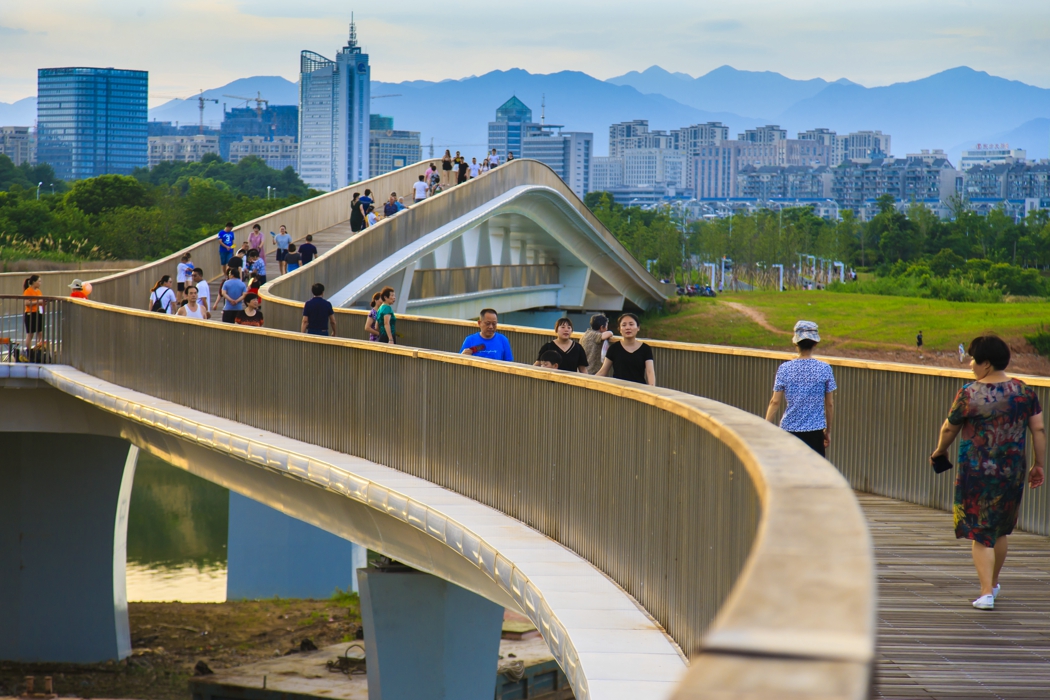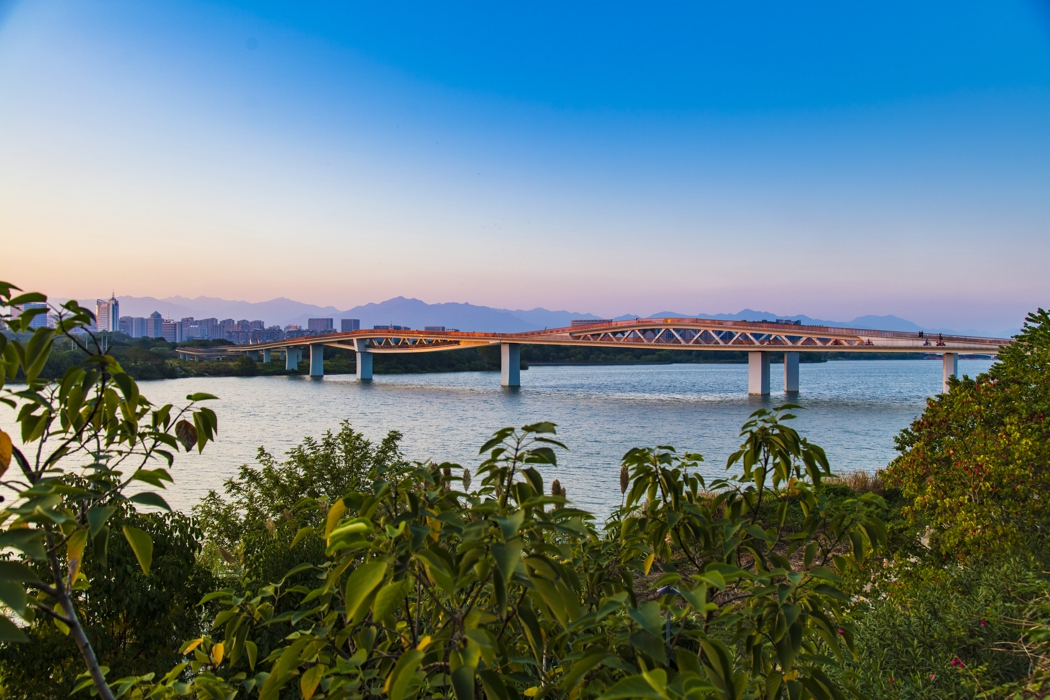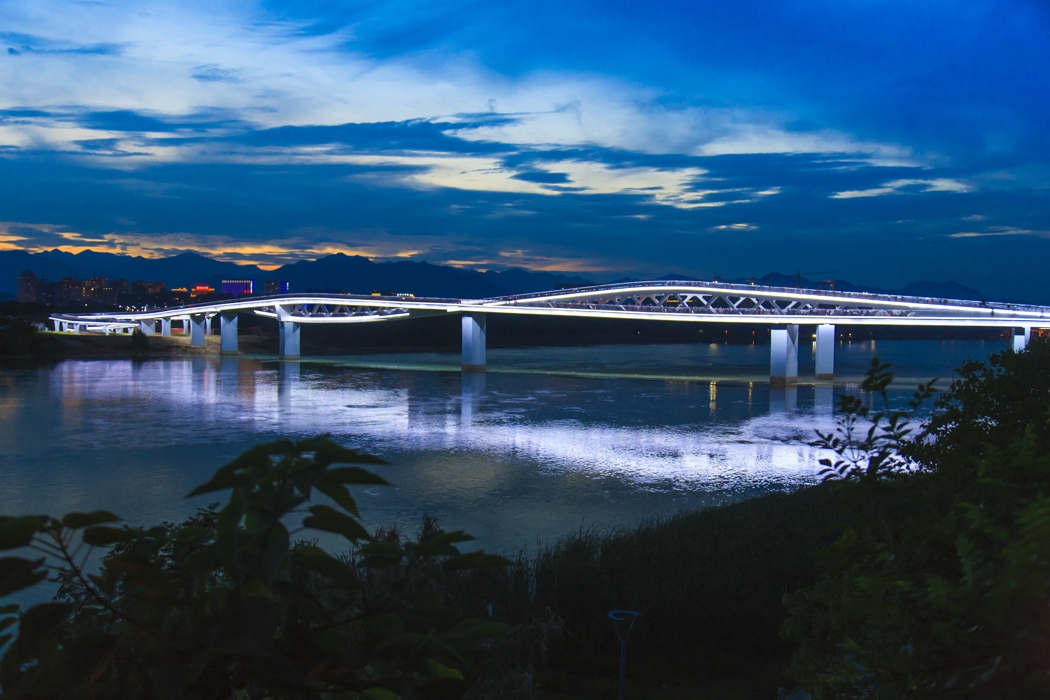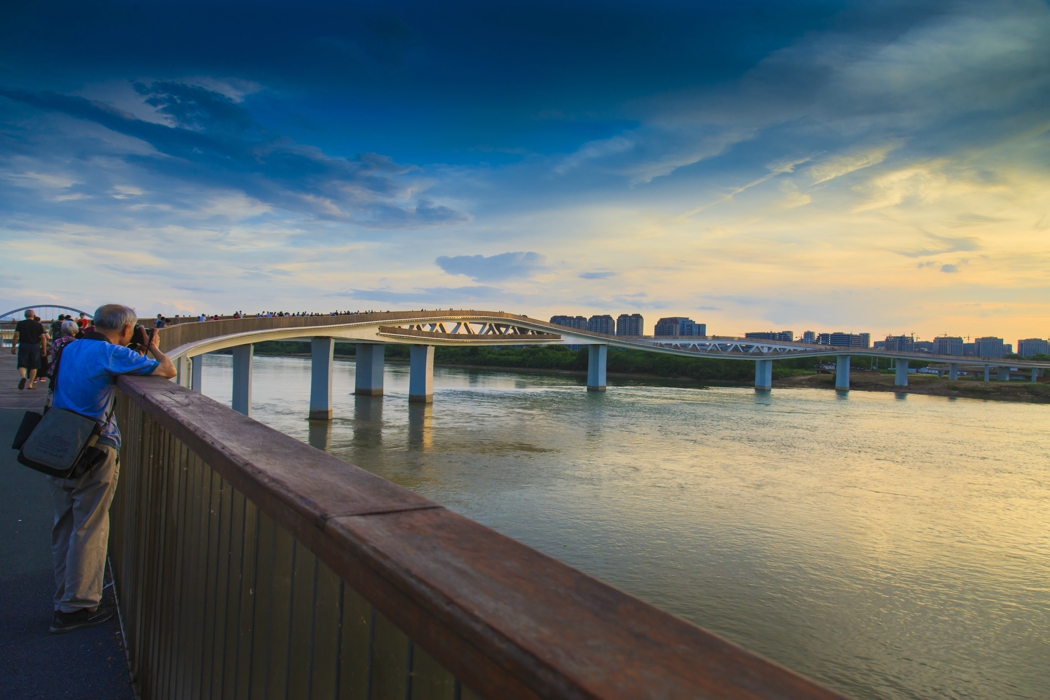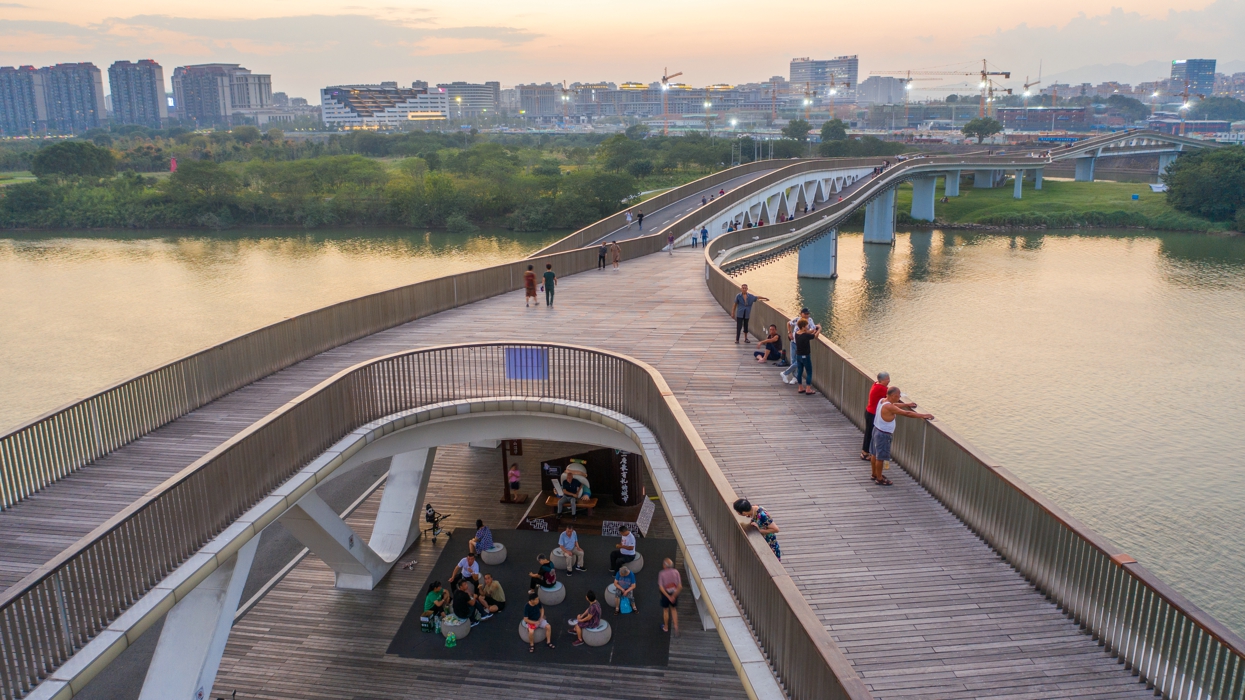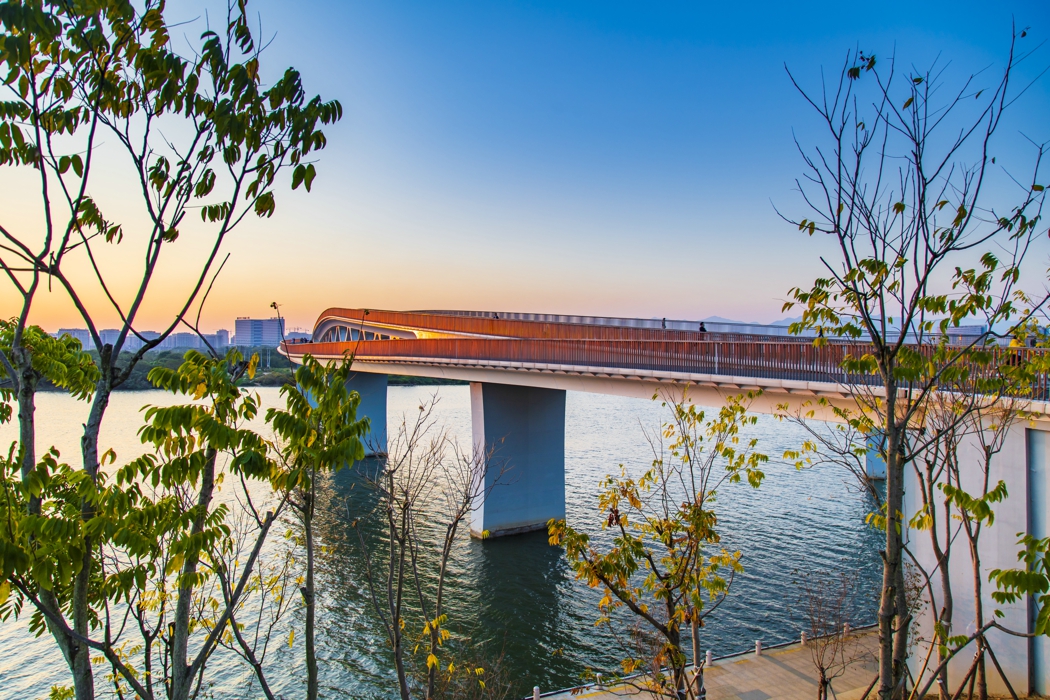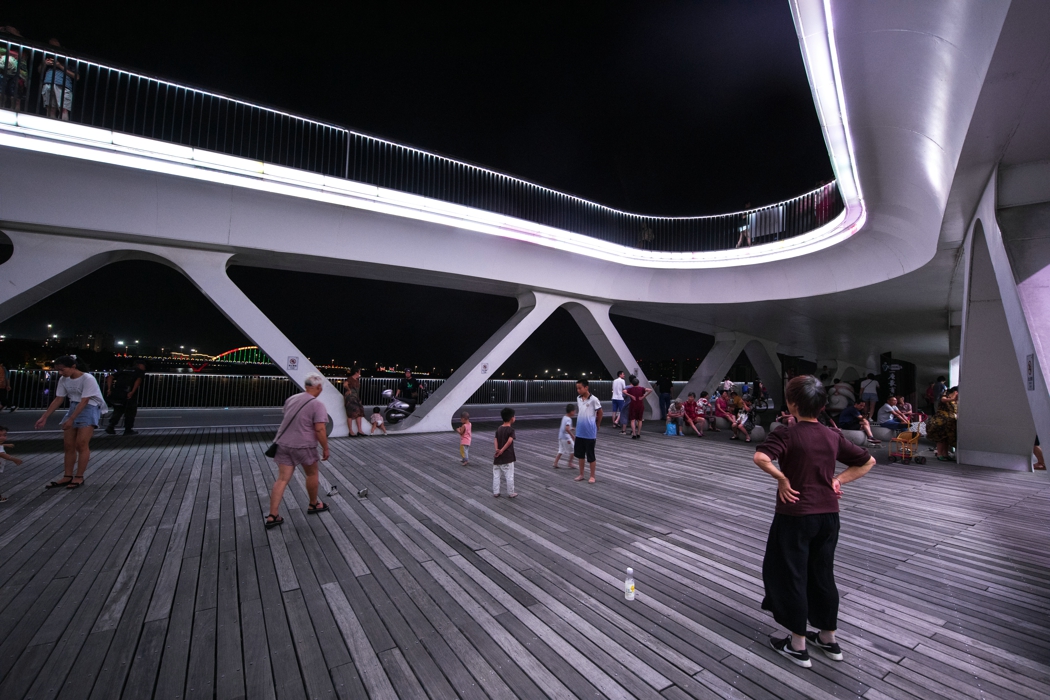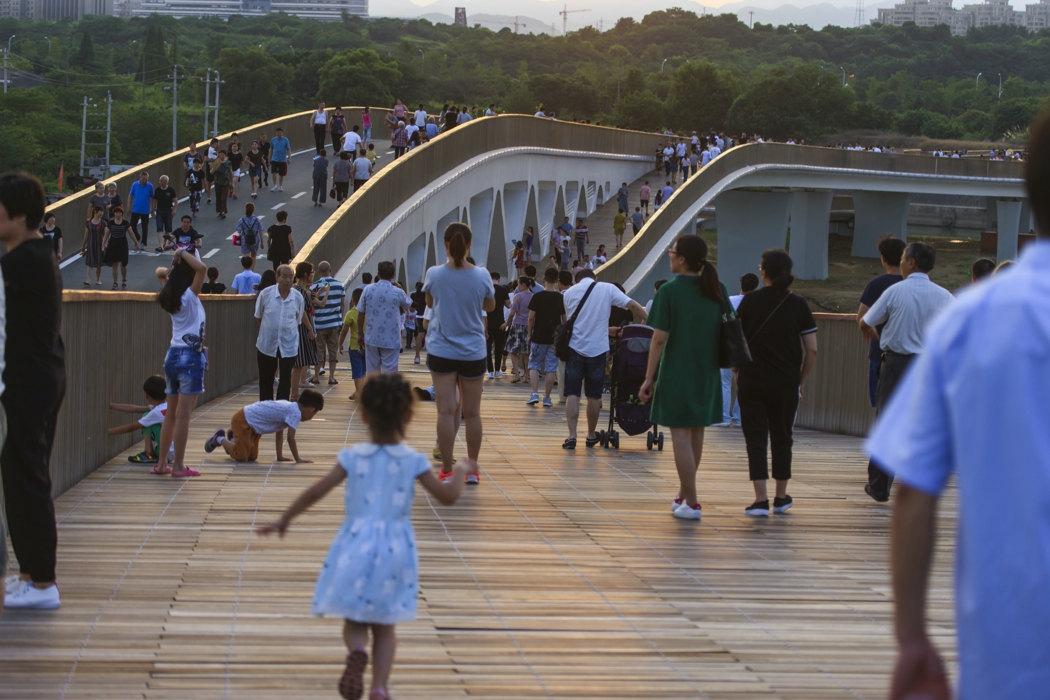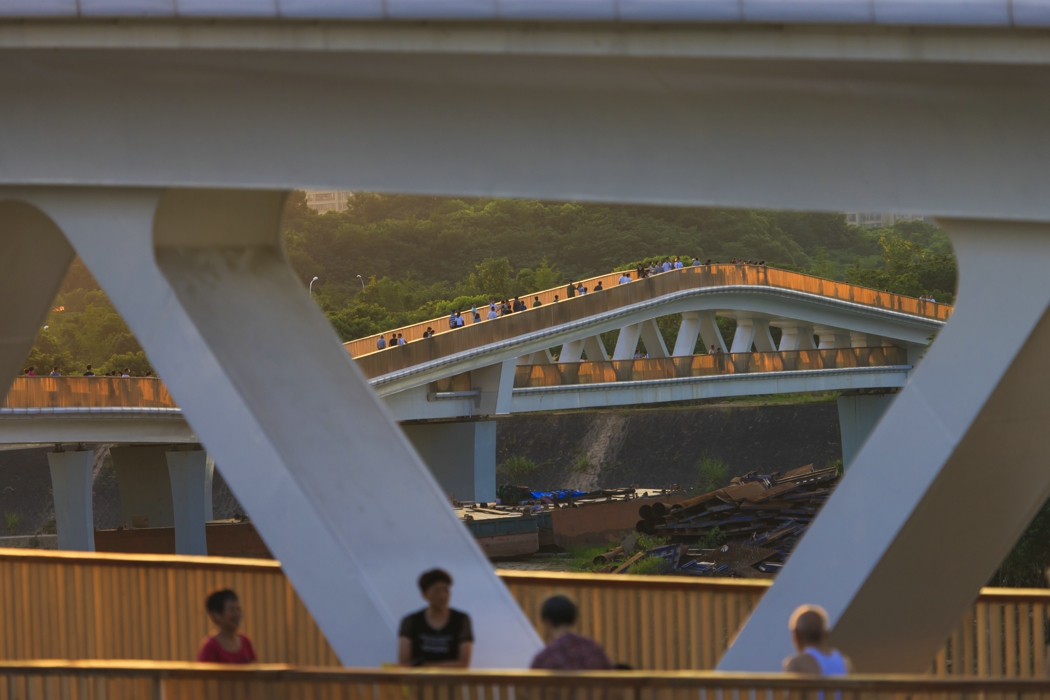Quzhou Lixian Landscape Bridge
Project Information
- Project Location:
- China Quzhou, Zhejiang
- Project Scale:
- 551m
- Design Time:
- May 2016
- Build Time:
- May 2017
Project Profile
Lixian Bridge is located between the Qujiang Bridge and Xianmen West Bridge in Quzhou, connecting Qujiang Middle Road in the east, spanning over the Yanjiayu Peninsula and Qujiang River, and linking to Ziwei Middle Road in the west. This bridge serves as a pedestrian and non-motorized vehicle corridor, linking Quzhou's new district with its historic urban core.
The total bridge length is 551 meters, with a standard width of 10 meters, symbolizing the connection between the new and old city. The design utilizes modern engineering techniques, featuring interlaced curved steel trusses with a maximum span of 70 meters. It complies with Class III one-way navigable channel standards, seamlessly blending structure and function.
The design incorporates cultural elements of traditional Chinese arch bridges into a modern context. A pedestrian arch curve is layered atop a slightly lower arch for cyclists. These dual, interwoven curves not only enhance the bridge’s arched visual form but also create scenic pauses at their intersections for pedestrians to stop and take in the views. As pedestrians traverse the arched walkway, the rising and falling elevation offers shifting perspectives and immersive visual experiences.
Lixian Bridge has ignited a new energy in Quzhou. On the day of its opening—despite a light drizzle—citizens participating in the “Green Mobility, Scenic Qujiang, Welcome to the Qu Era” walk had already gathered early on the east side of the Xin’an Lake landscape bridge, eager to celebrate the bridge’s arrival and the convenience it brings to city life. Locals remarked, “Most bridges we’ve seen before are cold and rigid—this one is full of life.” As night falls, the bridge becomes even more vibrant. From a distance, it resembles dragons dancing in the sky; up close, it looks like fairies descending to earth—a new landmark that breathes life into Quzhou’s cityscape.
